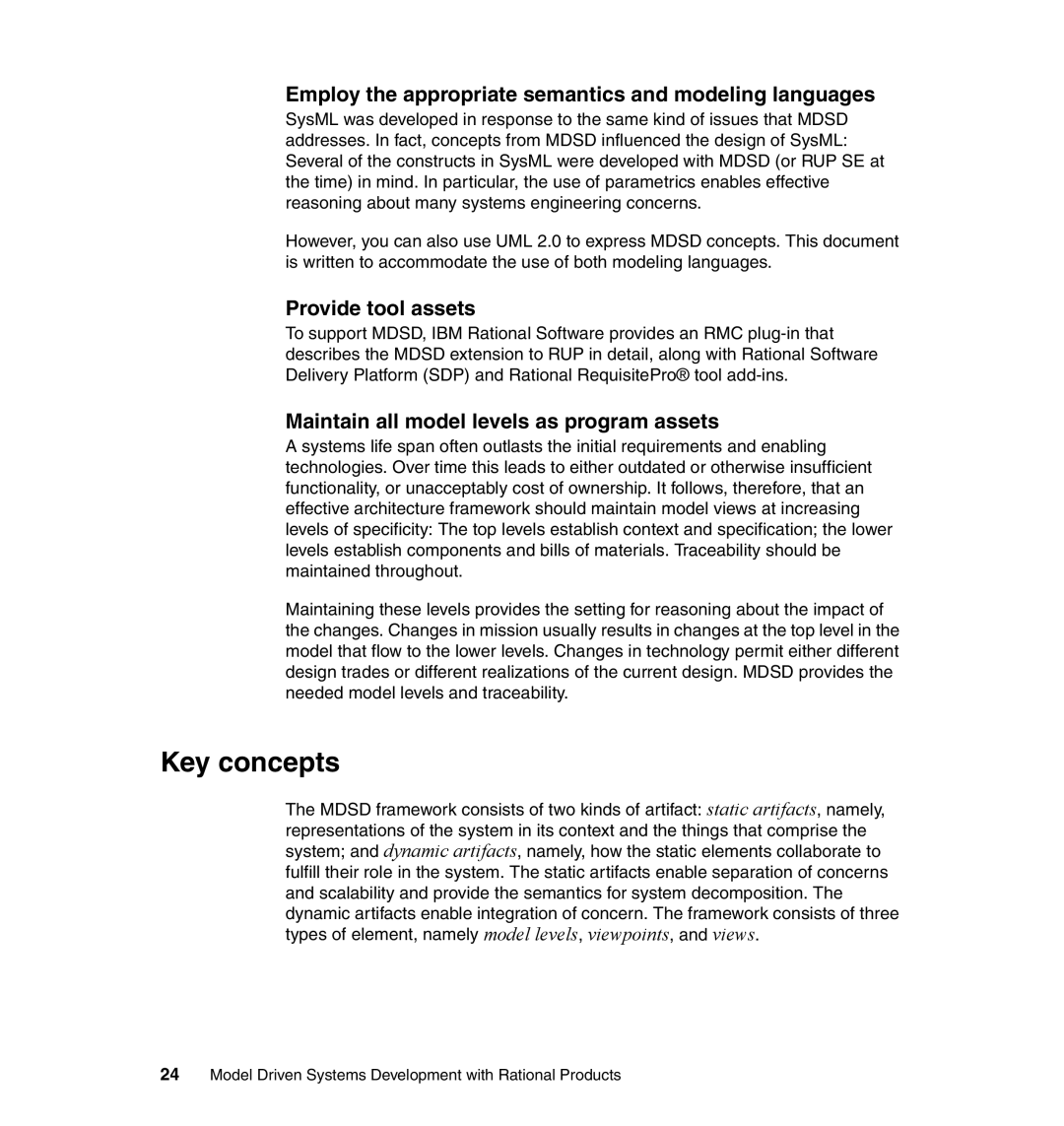Employ the appropriate semantics and modeling languages
SysML was developed in response to the same kind of issues that MDSD addresses. In fact, concepts from MDSD influenced the design of SysML: Several of the constructs in SysML were developed with MDSD (or RUP SE at the time) in mind. In particular, the use of parametrics enables effective reasoning about many systems engineering concerns.
However, you can also use UML 2.0 to express MDSD concepts. This document is written to accommodate the use of both modeling languages.
Provide tool assets
To support MDSD, IBM Rational Software provides an RMC
Maintain all model levels as program assets
A systems life span often outlasts the initial requirements and enabling technologies. Over time this leads to either outdated or otherwise insufficient functionality, or unacceptably cost of ownership. It follows, therefore, that an effective architecture framework should maintain model views at increasing levels of specificity: The top levels establish context and specification; the lower levels establish components and bills of materials. Traceability should be maintained throughout.
Maintaining these levels provides the setting for reasoning about the impact of the changes. Changes in mission usually results in changes at the top level in the model that flow to the lower levels. Changes in technology permit either different design trades or different realizations of the current design. MDSD provides the needed model levels and traceability.
Key concepts
The MDSD framework consists of two kinds of artifact: static artifacts, namely,
representations of the system in its context and the things that comprise the system; and dynamic artifacts, namely, how the static elements collaborate to
fulfill their role in the system. The static artifacts enable separation of concerns and scalability and provide the semantics for system decomposition. The
dynamic artifacts enable integration of concern. The framework consists of three types of element, namely model levels, viewpoints, and views.
24Model Driven Systems Development with Rational Products
